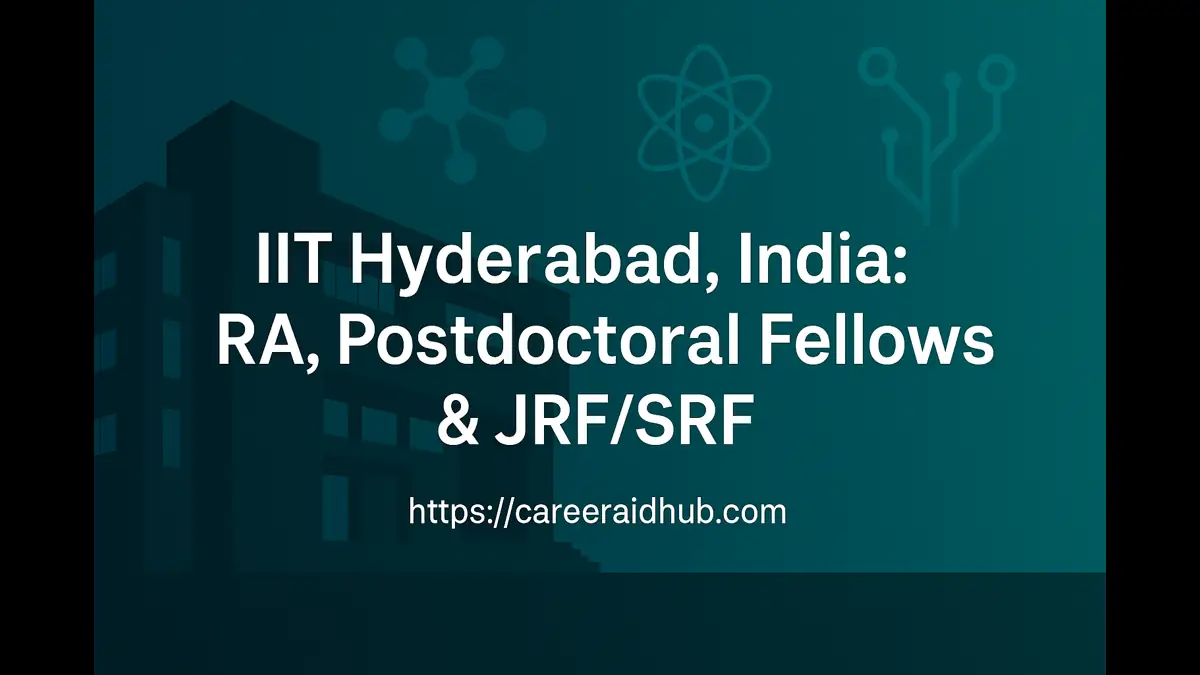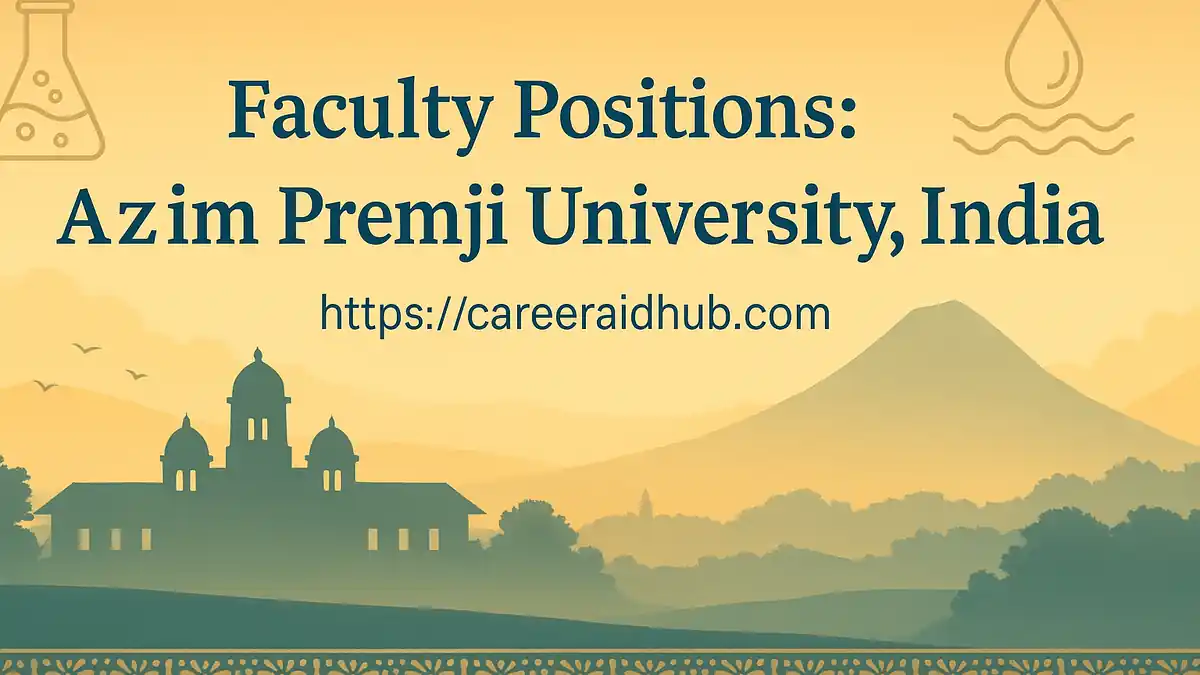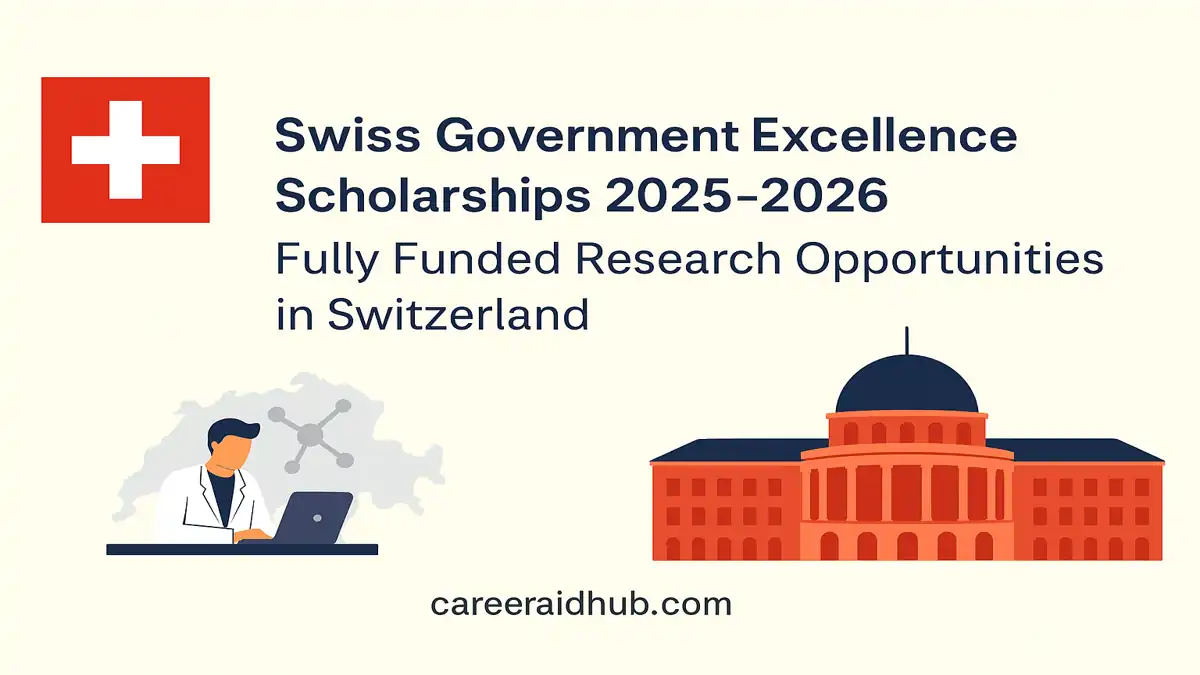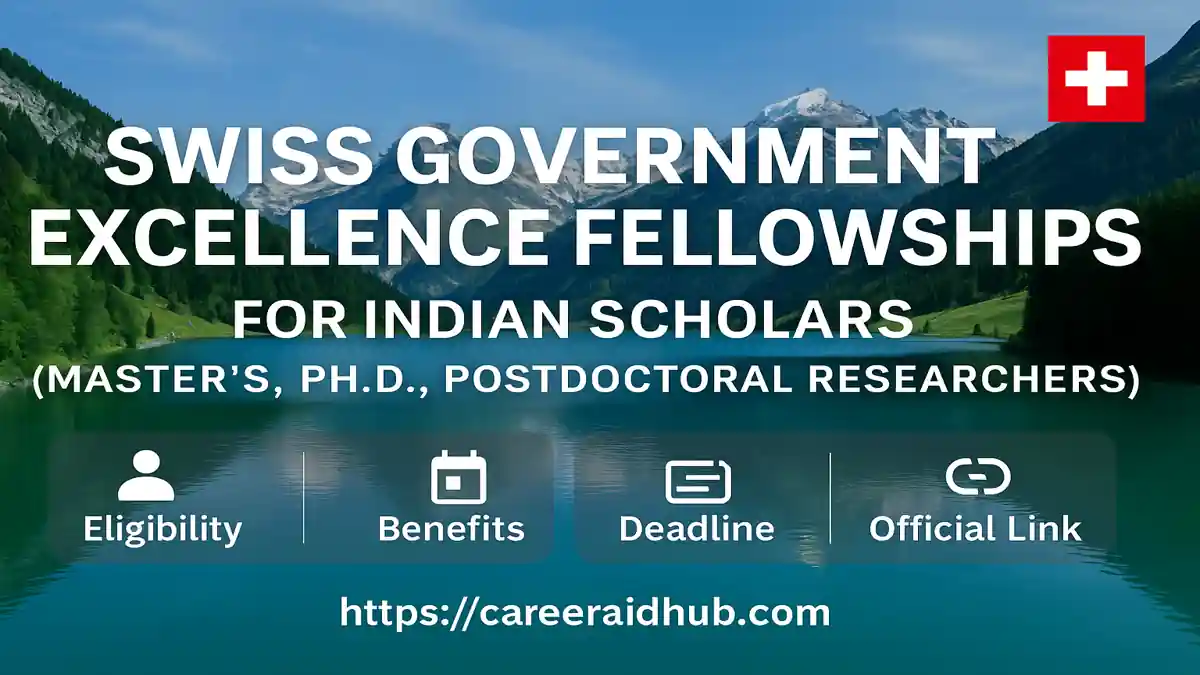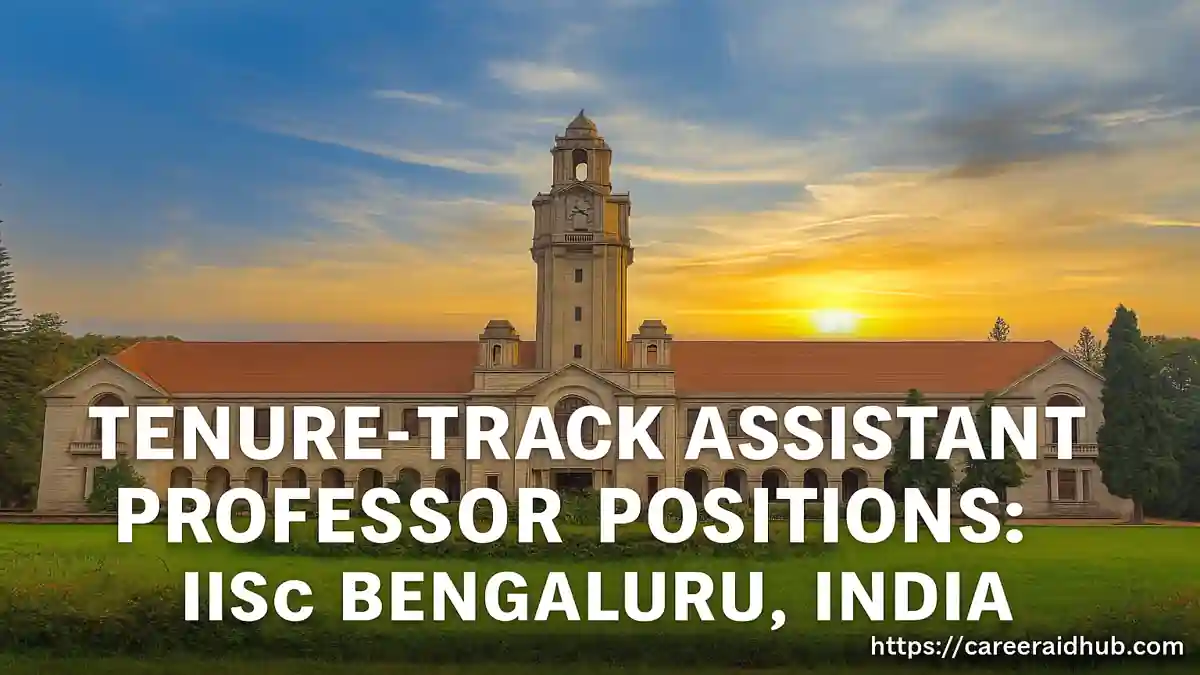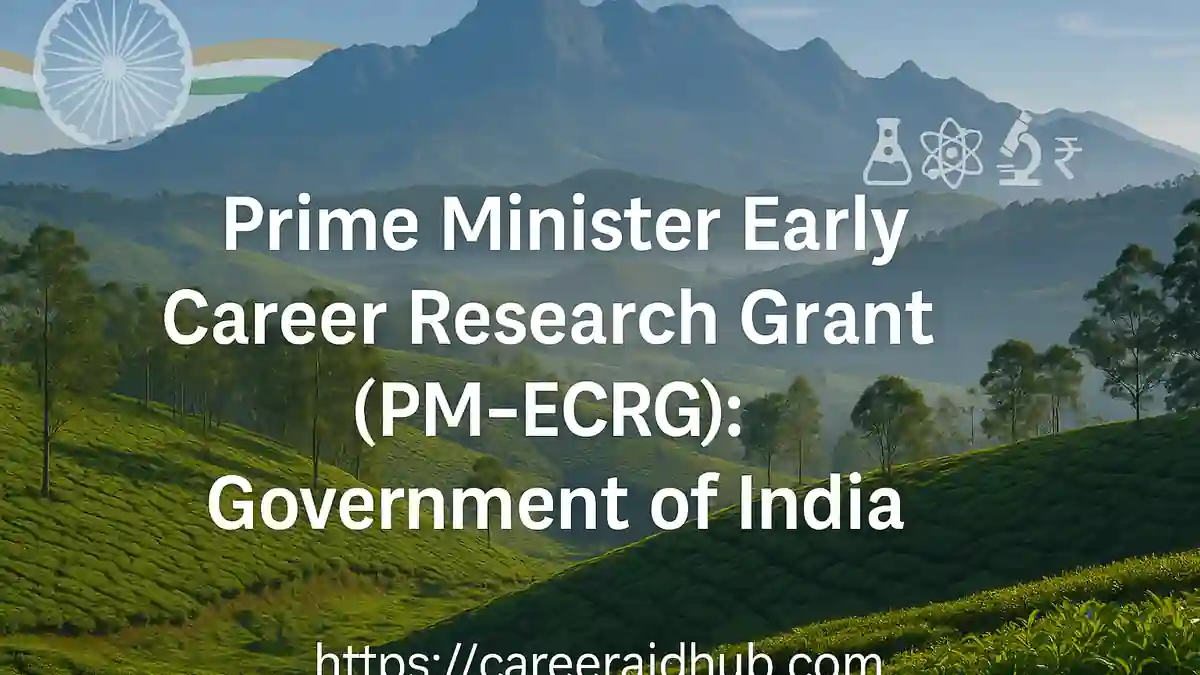IIT Hyderabad is Hiring: Research Assistants (RA), Postdoctoral Fellows & JRF/SRF — How to Apply, Eligibility, Perks & Pro Tips
If you are considering high-impact research roles in India, the Indian Institute of Technology Hyderabad (IITH) offers one of the most dynamic ecosystems to strengthen your academic portfolio and prepare for long-term research careers. IITH periodically publishes project-funded opportunities for Junior Research Fellows (JRF), Senior Research Fellows (SRF), Research Associates (RA/Postdoctoral), and Postdoctoral Fellows (PDF) spanning core engineering, basic sciences, and interdisciplinary domains. All current advertisements, along with crucial details—deadlines, application modalities, and contact points—are hosted on IITH’s official careers portal, which is updated on a rolling basis as new calls open.
This comprehensive, applicant-friendly guide preserves the original structure and information while elaborating context for clarity. It explains typical eligibility patterns, pay ranges commonly seen in recent calls, documents to prepare, application steps, selection norms, and practical pointers to sharpen your profile—so you can apply confidently and maximize your chances of selection.
What Roles Are Open?
IITH groups project opportunities under the “Postdoc/JRF/SRF positions” segment of its Careers page. While the postings are project-specific and time-bound, the page commonly features the following categories and associated expectations:
JRF/SRF positions: These roles are anchored to sponsored projects hosted by departments such as
Mathematics, Biomedical Engineering, Civil Engineering, Mechanical & Aerospace Engineering, Electrical Engineering, Chemistry, Physics, and other schools or centers. Advertisements typically define the project scope, expected deliverables, and any specialized skill sets—ranging from experimental competencies (e.g., material synthesis, characterization, cell culture) to computational abilities (e.g., Python/Matlab, finite-element modeling, data analysis workflows). The notice will also indicate the funding agency (for example, DST, DBT, DRDO) wherever applicable.Research Associate (RA) / Postdoctoral positions: Department-specific postdoctoral openings commonly outline consolidated pay, fixed or extendable durations, and targeted expertise—such as domain-specific experimental protocols, advanced instrumentation, or specialized computational pipelines. Postdocs are often expected to assume a higher degree of research independence, contribute to manuscript preparation and grant writing, and mentor junior team members.
Project Assistant/Engineer roles: These arise intermittently and are tied to particular labs, centers, or time-bound milestones within a larger sponsored study. Duties in such roles may emphasize prototyping, data pre-processing and curation, device assembly and testing, or supporting field-based data collection, depending on the nature of the project.
Illustrative examples (to show the typical variety of postings):
JRF (Department of Mathematics): A monthly fellowship of ₹37,000 for the initial two years, increasing to ₹42,000 thereafter. Some advertisements also signal a Ph.D. enrolment pathway subject to departmental norms. Applications are usually submitted via email to the Principal Investigator (PI), with a clearly stated deadline and specified subject line to ensure proper sorting.
Postdoctoral (Biomedical Engineering): A consolidated ₹75,000 per month has been advertised in certain calls, with initial appointments for six months and extensions up to three years based on performance and funding continuity. Applications typically go by email to the host lab or PI, following strict instructions about the subject line and document format.
RA-I (Physics, DRDO-funded): A stipend of ₹58,000 + HRA as per Government norms, with rolling shortlisting every few weeks until the position is filled. Many such calls mandate a single-PDF application package sent to the PI, combining CV, degree certificates, and supporting documents as instructed.
Important: Exact stipend, duration, mode of application, and submission address vary with each advertisement. Always follow the instructions embedded in the specific PDF notice linked from the Careers portal.
Eligibility — What Do the Advertisements Usually Ask For?
Eligibility remains project-specific, but recurring patterns help candidates gauge their readiness and plan ahead:
JRF/SRF:
A Master’s degree in the relevant area (e.g., M.Sc., M.Tech., M.E., or an equivalent qualification recognized by the host department) is typically required. Many STEM projects prefer or require GATE/NET qualification, both as a marker of academic readiness and tomeet sponsor guidelines. Certain ads—such as those in Mathematics—may state explicit performance cut-offs (e.g., a minimum 6.0 CGPA at both undergraduate and postgraduate levels). Where a Ph.D. pathway is indicated, the advertisement will generally mention the departmental procedures, such as qualifying examinations or interviews to formalize doctoral registration.RA/Postdoctoral:
A Ph.D. in a relevant discipline is the baseline requirement. Beyond the degree, committees place weight on hands-on experience that aligns with the project’s methods (for instance, cell culture, in vivo animal experiments, or specialized assays like PCR/ELISA/Western blotting in Biomedical Engineering; or domain-specific simulation stacks and data analysis in Physics or Engineering). Evidence of peer-reviewed publications in the stated area enhances competitiveness. Some positions may also emphasize cross-functional abilities, such as interfacial work with clinicians, industry partners, or other academic units, depending on the project’s goals.Project-specific additions:
Advertisements sometimes specify upper age limits (in line with sponsoring agency rules), request validated software proficiency (e.g., Python for orbital dynamics problems, or Matlab/COMSOL/ANSYS for modeling), and may explicitly ask for a portfolio of publications or a brief research statement outlining how the applicant’s expertise maps to the project plan. Pay close attention to such clauses, as they often serve as preliminaryfilters during shortlisting.
Salary & Duration — What to Expect?
Compensation and tenure are strictly as per the advertisement and sponsor norms. From recent patterns, candidates often observe the following ranges:
JRF/SRF:
A typical monthly fellowship for JRF is ₹37,000, and for SRF ₹42,000, aligned with prevailing norms in many Government-funded projects. Where campus accommodation is available and availed, separate HRA may not be provided; the exact rule will be stated in the advertisement. Certain projects also mention annual or phase-wise reviews before an extension is granted, with performance benchmarks tied to milestones.RA/Postdoctoral:
RA-I or equivalent designations have advertised ₹58,000 + HRA in line with Government guidelines, while some postdoctoral calls specify ₹75,000 consolidated per month. Initial appointments often range from six to twelve months, with possible extensions up to two or three years, contingent on funding and performance. Renewal usually considers research outputs (e.g., manuscripts submitted/accepted), progress on deliverables, and the PI’s assessment of the candidate’s independence and initiative.
Candidates should verify HRA/hostel rules, eligibility for increments, and any extension policy on a case-by-case basis by reading the PDF notice thoroughly. Do not rely on general norms alone; the specific advertisement always prevails where there is ambiguity.
How to Apply (Step-by-Step)
Visit the Careers Portal → Postdoc/JRF/SRF Positions:
Navigate to the official IITH Careers page and open the segment listing active project positions. This is the authoritative gateway for all current advertisements.Download and Read the Relevant PDF:
Each listing links to a PDF notice that includes eligibility, deadline (or rolling status), the recipient email, the correct email subject line, and a document checklist. Reading the PDF end-to-end is essential to avoid disqualification for procedural lapses.Prepare a Single-PDF Application (Where Required):
Many advertisements request a consolidated PDF containing:CV with complete coordinates, educational history, key skills, and publications;
Degree/mark sheets (scanned, legible, and in the order requested);
Proof of date of birth;
A concise Statement of Purpose (SOP) or Research Statement that aligns your skill set with the project;
Any project-specific forms or declarations specified in the notice.
Ensure file naming conventions and page limits, if any, are followed.
Email the Application Exactly as Instructed:
Adhere to the exact subject line and attachment format specified. Some notices also require you to copy (CC) the department office or include your application data in the body of the email. Deviating from these instructions—even unintentionally—may lead to non-consideration.Monitor Your Inbox for Shortlisting/Interview Intimation:
Shortlisted candidates typically receive notification via email. Interviews may be conducted online, and the timeline is often tight, particularly for rolling calls. Keep your documents ready for verification and be prepared to discuss your contributions, data, and methods in detail.
Selection Process — What Happens After You Apply?
Shortlisting:
Committees consider minimum eligibility, alignment with project methods, publication record, and, where relevant, GATE/NET status. Many PIs also look for evidence of practical readiness—for example, whether you can replicate a protocol, interpret instrument readings, or troubleshoot a code pipeline with minimal supervision.Interviews:
Interactions frequently focus on fundamentals and project-aligned problem-solving. Expect pointed questions on the experimental or computational methods listed in the advertisement. You may be asked to discuss a previous study you contributed to—its hypothesis, your precise role, data quality checks you performed, the statistical tests chosen, or how you validated a model or device.Rolling Calls:
For RA/Postdoc roles with rolling shortlisting, PIs may review applications periodically—say, every two weeks—until a suitable candidate accepts an offer. Applying early improves the odds of being evaluated in the next review cycle rather than waiting for the final deadline.
Make Your Application Stand Out
Map Your Skills Line-by-Line to the Notice:
If the advertisement highlights cell–material interactions or pouch-cell fabrication, reflect those keywords in your SOP and CV—with concrete evidence. Mention facilities or instruments you have actually used (e.g., bioreactors, glovebox, SEM/TEM, XRD, Raman, tensile tester), the nature of datasets handled, and any associated code repositories.Quantify Outcomes and Contextualize Impact:
Rather than listing duties alone, articulate outcomes—first-author or co-authored publications, software packages released, protocols standardized, or measurable performance improvements (e.g., a boost in energy density, improved model accuracy, enhanced throughput). Numbers, where defensible, help the committee grasp your contribution quickly.Respect Format and Micro-Instructions:
Several IITH calls emphasize the email subject line, single-PDF packaging, and orderly presentation of documents. These are not trivial; they test attention to detail and your ability to follow laboratory or sponsor requirements.Demonstrate Readiness and Ownership:
Short or performance-based contracts require speed and reliability. Indicate your availability date, willingness to work across interdisciplinary boundaries, and comfort with independent problem-solving. If you have mentored juniors or coordinated with external collaborators, note that succinctly.
Quick Checklist Before You Hit “Send”
Read the exact advertisement and follow every instruction verbatim.
Merge CV + certificates + SOP into a single PDF—if and as required.
Use the precise email address and subject line specified in the notice.
Confirm deadline or rolling review status and check time zone (IST).
Surface relevant publications, tools, and methods directly tied to the project.
Keep your inbox and phone reachable for shortlisting and interview updates.
Unless stated otherwise in the advertisement, times on the site are shown in IST.
Final Word
IIT Hyderabad’s project positions offer a rigorous platform for building deep technical fluency, publishing in credible venues, and practicing end-to-end research—spanning hypothesis design, experimentation/simulation, data validation, and dissemination. Because each advertisement is unique, treat the PDF notice as the rulebook: align your skills and documents with its explicit instructions, submit a clean and complete application, and be responsive after submission. When the call specifies rolling shortlisting, do not wait for an arbitrary “last minute”—apply promptly to enter the upcoming review cycle. For current opportunities and official instructions, consult the IITH Careers portal and follow the latest postings precisely.
References
[1] IIT Hyderabad — Careers (Postdoc/JRF/SRF positions).
Frequently Asked Questions (FAQs)
Typically, candidates hold an M.Sc./M.Tech. in a relevant field; however, each advertisement specifies exact qualifications, minimum grades, and preferred skills. Always follow the project notice.
Often yes; however, requirements vary by sponsor and department. Therefore, check the specific advertisement for mandatory GATE/NET or equivalent eligibility norms.
Generally, download the official PDF, prepare a single-PDF application, and email it using the exact subject line. However, always follow the detailed instructions given.
Stipends follow the advertisement and sponsor rules; moreover, amounts and HRA or hostel provisions differ by project. Always verify figures in the current call.
Both exist. Some calls review applications periodically until filled, while others close on a date. Therefore, apply early and monitor updates closely.
Commonly, Mathematics, Biomedical Engineering, Civil, Mechanical & Aerospace, Electrical, Chemistry, and Physics recruit; nevertheless, availability depends on active sponsored projects.
Typically, submit CV, mark sheets, degree certificates, proof of birth, and a concise SOP or research statement; however, always include any project-specific forms requested.
Sometimes yes; nevertheless, Ph.D. admission depends on departmental rules, performance, and selection procedures. Always confirm the pathway in the advertisement.
Committees assess eligibility, project fit, skills, and publications; then conduct interviews—often online—focused on fundamentals, methods, and readiness to start quickly.
Occasionally yes; however, eligibility, visa, and funding constraints vary by sponsor. Therefore, check each advertisement and contact the PI for clarifications.

